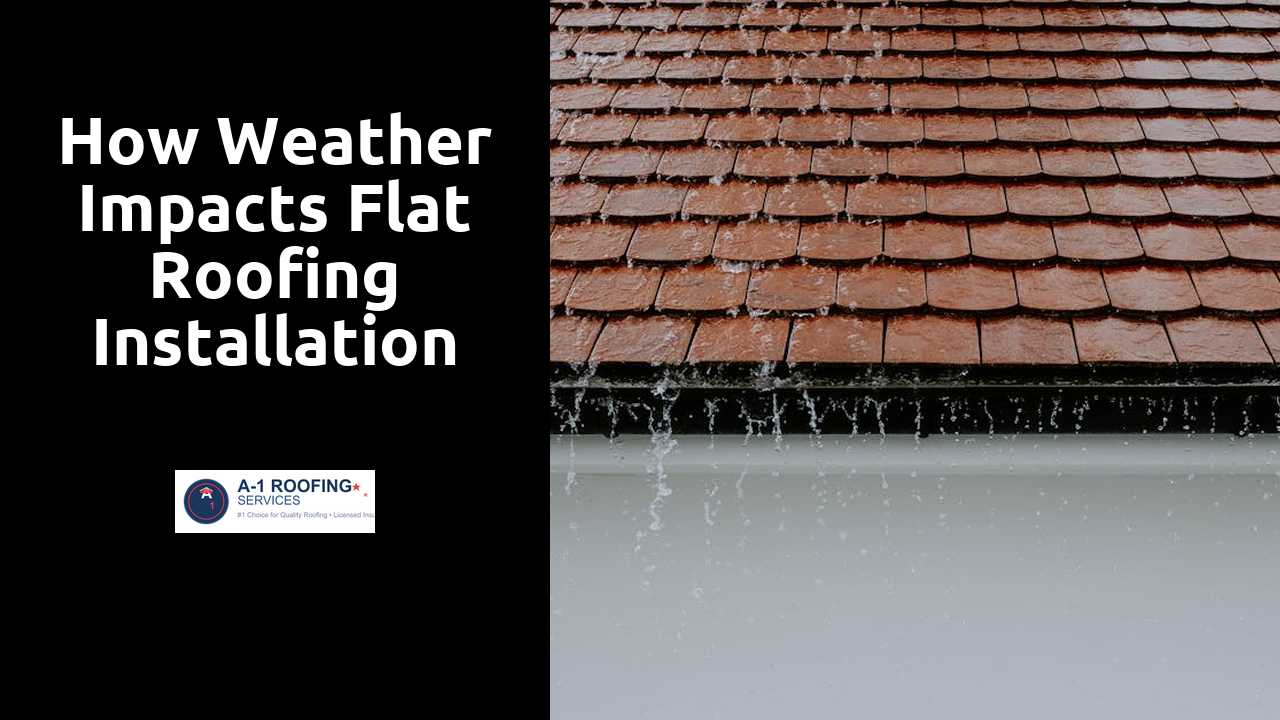
How Weather Impacts Flat Roofing Installation
Table Of Contents
Effects of Humidity on Roofing Materials
Humidity significantly influences the behavior and performance of various roofing materials. When moisture levels are high, substances like asphalt, rubber, and some membranes can become more pliable. This change can affect the adhesive properties, making it crucial to ensure proper bonding during installation. Contractors must be aware of these alterations to avoid compromised joints or seams that can lead to leaks in the future.
Moreover, excessive humidity can hinder the curing process of materials, particularly when adhesives or sealants are involved. Many products have specific temperature and moisture thresholds for optimal application. Installing roofing systems under humid conditions can introduce long-term risks, such as mold growth or diminished lifespan of the materials. Understanding these effects is essential for ensuring that the roofing system performs well throughout its intended lifespan.
Get more info by visiting this post.
Managing Moisture During Installation
Moisture management is crucial when installing flat roofing systems. Excess humidity can hinder proper adhesion of roofing materials and affect the integrity of the final product. It's essential to monitor the moisture levels in both the air and on the substrate. Before beginning installation, check the weather forecast for rain or high humidity days. Ideally, roofing installation should occur during drier weather to minimize potential complications.
To combat moisture-related problems, offering adequate ventilation is vital. Ensure that any trapped moisture can escape, especially during warm afternoons. Sealants and adhesives require specific temperatures and humidity levels to cure correctly. Using moisture barriers can further protect the installation process by preventing humidity from penetrating the roofing materials. Proper planning and execution can significantly enhance the longevity and performance of a flat roofing system.
Local Climate Considerations
The climate in a given region significantly influences the choice of materials and installation techniques for flat roofing. Areas with extended periods of heat and intense sun exposure may necessitate the use of reflective coatings to minimize heat absorption. Conversely, regions that experience heavy rainfall or snow accumulation will benefit from materials designed for excellent drainage and moisture resistance. These factors inform not only material selection but also the slope and design of the roofing system to ensure longevity and effectiveness.
Understanding local climate patterns allows roofing professionals to anticipate challenges that may arise during installation. Seasonal temperatures can dictate the timing of projects, with extreme cold requiring specialized adhesives that perform well under such conditions. In contrast, high humidity levels might necessitate precautions to prevent moisture buildup, which can compromise the integrity of the roofing materials. Adaptations made according to local weather trends can enhance the durability and performance of flat roofs, providing a strong foundation for building protection.
Tailoring Installation to Your Area's Weather
Understanding the specific weather patterns of a region is essential when planning a flat roofing installation. Areas with consistent rainfall may require materials designed for better water resistance to prevent leaks and damage. Conversely, locations experiencing high temperatures and direct sunlight will benefit from roofing systems that reflect heat. Choosing the right materials and installation techniques based on local climate can enhance durability and performance.
Seasonal changes should also guide the timing of installations. In regions where winters are harsh, scheduling the work for milder months can help ensure better adhesion and curing of materials. Similarly, areas with prolonged rainy seasons may necessitate the implementation of specific waterproofing measures before installation begins. By considering these factors, contractors can optimize roofing projects for longevity and effectiveness.
Weather-Related Safety Precautions
When installing flat roofs, weather conditions play a critical role in ensuring the safety of the installation crew. High winds can create hazardous situations, particularly when handling large, unwieldy materials. It is essential to monitor wind speeds closely. If winds exceed safe limits, work should be postponed to prevent accidents and injuries. Additionally, rain or snow can impair visibility and make surfaces slippery. Having clear protocols for weather cancellations will protect workers and maintain the quality of the installation.
Extreme temperatures also pose safety concerns during roofing projects. Excessive heat can lead to heat stress, while cold weather can result in frostbite or other cold-related illnesses. Crews should always have access to water and breaks in hot conditions to stay hydrated and cool. In colder weather, wearing appropriate layers and ensuring material handling is manageable is critical. Regular training on recognizing and responding to weather-related hazards fosters a culture of safety, ultimately benefiting both workers and the integrity of the roofing installation.
Ensuring Worker Safety During Installation
Safety measures during roofing installation are paramount. Inclement weather increases the risks associated with working on flat roofs. Rain or strong winds can make surfaces slick and reduce visibility, both of which pose significant hazards. Workers should be provided with appropriate safety gear, including harnesses and non-slip footwear. Regular training on how to respond to changing weather conditions is essential.
Proper planning also plays a critical role in maintaining safety on the job site. Before starting an installation, conducting a thorough weather assessment is advisable. Scheduling installations during favorable weather can help mitigate risks. Additionally, keeping communication lines open ensures that all workers are aware of potential weather changes. Establishing clear protocols for severe weather scenarios can be life-saving and prevent accidents.
Related Links
Maintenance Tips Post-Installation for Flat RoofingSafety Precautions during Flat Roofing Installations